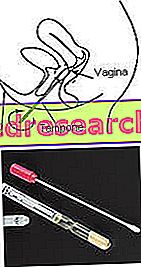The vaginal swab is a diagnostic test aimed at finding microorganisms responsible for infections of the vagina or cervix. The exam uses a simple and subtle

The vaginal swab is therefore a tool widely used in the diagnosis of venereal diseases (sexually transmitted), also very useful to evaluate the most suitable treatment to eradicate the identified pathogen.
If a cervical swab is required (for example for the diagnosis of Mycoplasma and Chlamydia) the use of the speculum is necessary, a special instrument that slightly dilates the vaginal opening in order to facilitate the extraction of the secretion from the cervical canal.
Preparation for the vaginal swab
In order not to invalidate the outcome of the exam, it is good:
refrain from sexual intercourse in the 24 hours preceding it;
suspend all antibiotic and antifungal therapy in the week before;
avoid vaginal irrigations, local therapies in the vagina (eggs, glow plugs, etc.) and baths in the pool for 24 hours before the exam;
refrain from intimate hygiene on the morning of the exam.
Moreover:
the withdrawal must be carried out a few days in advance and delayed respectively from the beginning and the end of menstruation.
Vaginal swab during pregnancy
If a pregnancy is being planned, or this has just occurred, the gynecologist can perform a vaginal swab to verify that the woman does not suffer from infections, for example due to fungi (such as Candida) or protozoa (Trichomonas), dangerous for his health and that of the fetus. Subsequently, towards the thirty-sixth week, a new vaginal swab is performed to search for other microorganisms, and in particular beta-hemolytic streptococcus, which could cause neonatal infections. In this case the swab is also performed at rectal level and is accompanied by urine culture to look for a possible urinary infection.



